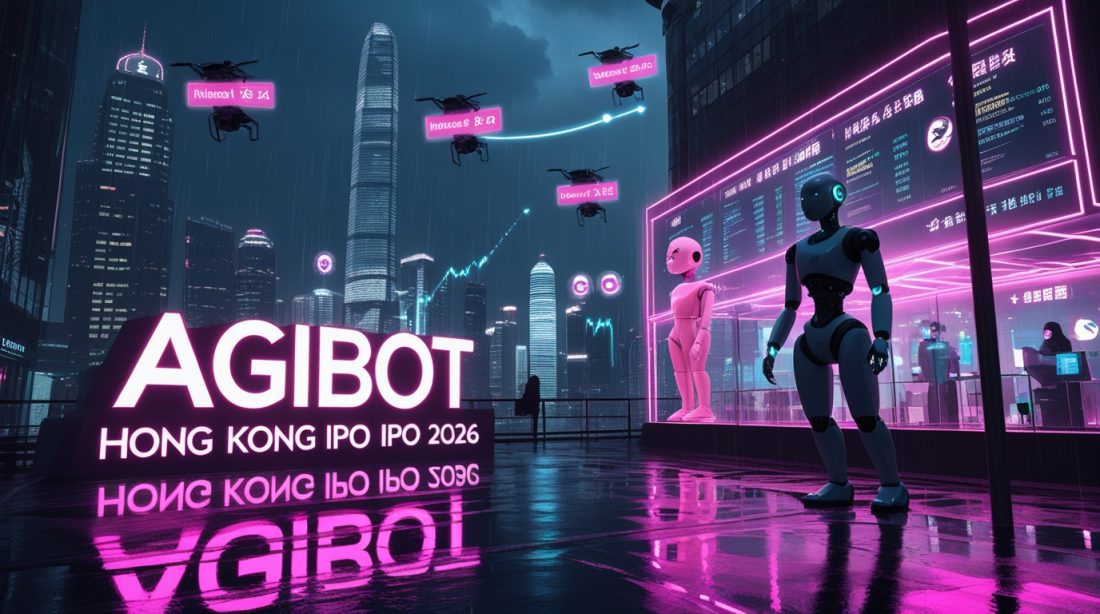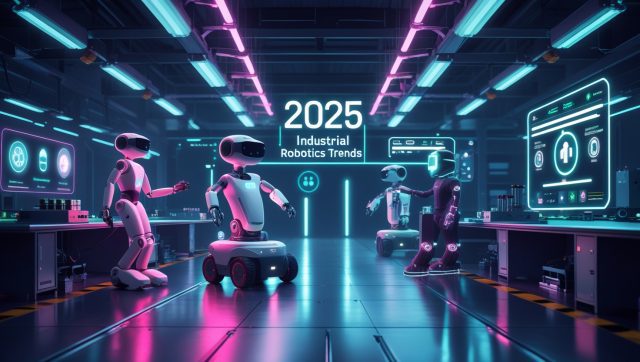TL;DR
AgiBot, a Chinese humanoid robot maker, is reportedly targeting a Hong Kong IPO in 2026 with an ambitious $5.1–$6.4 billion valuation. This move comes as the global Industrial AI market is projected to expand dramatically, potentially powering $44 billion in revenue by 2025. However, AgiBot is also dealing with executive departures, an internal reorganization, and intense competition in China’s AI robotics sector.
The company has previously denied IPO rumors, making this potential robot stock listing a high-stakes story to watch in the AI investment trend landscape.
Exclusive: AgiBot Plans Hong Kong IPO Next Year in Bold Market Move
According to sources cited by Ainvest, AgiBot is planning an initial public offering (IPO) on the Hong Kong Stock Exchange, targeting a substantial IPO valuation between $5.1 billion and $6.4 billion.
This potential AgiBot robot stock listing thrusts the company into the spotlight of the industrial AI and robotics boom. If successful, it would mark a remarkably rapid ascent for a company founded just in February 2023 — a standout story among Hong Kong stock exchange AI companies. This rapid growth mirrors a broader trend where industrial robotics leaders are powering a factory profit surge.
An IPO at this targeted valuation would highlight investor confidence in embodied AI companies going public, particularly from China. AgiBot’s backers reportedly include Hillhouse, Sequoia China, Tencent, BYD, and Baidu Ventures — a lineup that strengthens its credibility among top AgiBot investors.
However, the path to the public markets may not be smooth. AgiBot previously denied backdoor listing rumors, telling AsianFin in July 2025: “This is not true. AgiBot currently has no concrete plans for a Hong Kong IPO.” That past denial adds uncertainty to current speculation.
Why is AgiBot Pursuing an IPO Now? The Industrial AI Gold Rush
The reported IPO plan aligns with the global surge in the Industrial AI market, which grew to $43.6 billion in 2024 and could reach $153.9 billion by 2030, according to the IoT Analytics Industrial AI report. For more on the foundational technology, you can explore the U.S. National Institute of Standards and Technology’s (NIST) overview of AI.
For a hardware-heavy company like AgiBot, going public could provide capital for R&D expansion, scaling production, and international growth — critical for staying ahead in industrial automation and predictive maintenance AI solutions.
| Metric | 2024 Status | 2030 Projection | Implication for AgiBot |
|---|---|---|---|
| Global Market Size | $43.6 billion | $153.9 billion | Supports bullish Industrial AI market growth outlook |
| Corporate AI Strategy | Isolated pilots (2021) | CEO-driven AI strategies | Aligns with CEO-driven AI strategy in manufacturing |
| Spending vs. Revenue | 0.1% of mfg. revenue | Growing rapidly | Indicates huge upside for manufacturing AI spending |
Skepticism Around AgiBot’s Move: Internal Challenges
Internally, AgiBot has faced notable challenges. In August 2025, it lost top executives, including Lingxi division president Wei Qiang and co-founder Yan Weixin, signaling turbulence in leadership. Such executive departures can create significant instability ahead of a public listing.
These changes followed an internal reorganization in October 2024, which reportedly created separate, competing divisions within the R&D department. Such shakeups often occur when companies gear up for IPOs but can also destabilize teams.
Adding to this, other AgiBot executive departures — including its algorithm director and manufacturing head — have raised investor concerns about stability ahead of its public listing.
Inside AgiBot’s Technology: Lingxi X2, Expedition, and Beyond
AgiBot’s Lingxi X2 humanoid robot and Expedition robot series have attracted attention for their fluid movement and industrial applications. These products highlight AgiBot’s focus on embodied AI — where physical robots perform tasks using learned intelligence, a field seeing rapid advancements in robot training through generative AI.
The company’s AI robotics R&D center in Kazakhstan is reportedly working on hardware and software synergies to boost AI model performance benchmarks for future industrial robots.
However, the Chinese robotics ecosystem is fiercely competitive, with Unitree Robotics vs AgiBot comparisons becoming increasingly common. This underscores the growing China AI robotics competition, as both companies target similar markets in industrial automation and humanoid robotics.
Why the Industrial AI Context Matters for Valuation
The Industrial AI market size by 2030 could shape how investors perceive AgiBot’s long-term potential. The State of AI Report 2025 and Stanford AI Index 2025 report both highlight manufacturing as a key driver of global AI investment trends. The World Economic Forum also discusses the impact of AI in manufacturing on a global scale.
Industrial AI applications like automated optical inspection and predictive maintenance AI savings continue to deliver strong ROI. For instance, Renault reported millions saved annually through predictive analytics — exactly the kind of success AgiBot hopes to replicate through humanoid automation and AI-driven predictive maintenance.
AgiBot’s Swancor acquisition also signals its intent to diversify into industrial materials and strengthen its manufacturing ecosystem ahead of the IPO.
FAQ: Your AgiBot IPO Questions, Answered
When is the AgiBot IPO expected?
Sources suggest the AgiBot Hong Kong IPO 2026 could happen in the first half of the year.
What’s AgiBot’s projected valuation?
The AgiBot IPO valuation is expected between $5.1–$6.4 billion, depending on industrial AI market growth conditions.
Who are AgiBot’s main investors?
AgiBot investors Hillhouse and Sequoia lead the funding lineup, alongside Tencent and BYD.
What internal issues has AgiBot faced?
AgiBot investors Hillhouse and Sequoia lead the funding lineup, alongside Tencent and BYD.
What makes AgiBot unique among robotics companies?
Its Lingxi X2 and Expedition robot demonstrate advanced embodied AI capabilities that aim to merge industrial precision with human-like dexterity, positioning it in the race for future humanoid robot applications.
A High-Stakes Race to the Public Market
AgiBot’s journey toward its 2026 Hong Kong IPO is a defining moment for AI robotics companies in China. It reflects a bold bid to secure funding amid industrial AI market expansion, manufacturing AI spending growth, and rising global AI investment trends. For further reading on financial regulations for tech IPOs, consult the Hong Kong Exchanges and Clearing (HKEX) official website.
Whether AgiBot can overcome its internal challenges and deliver on its ambitious revenue target for 2025 will determine if it becomes a global leader or another cautionary tale in the race for future humanoid robots.
CTA:
Want to stay ahead of the curve on tech IPOs, AI market insights, and robotics investments?
Subscribe to our newsletter for unbiased, data-driven analysis delivered straight to your inbox.



